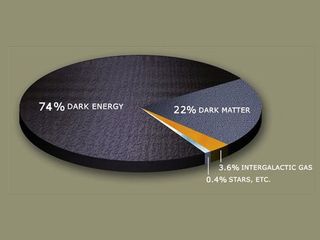Introduction

(Image credit: Image via Shutterstock)
In 1900, the British physicist Lord Kelvin is said to have pronounced: "There is nothing new to be discovered in physics now. All that remains is more and more precise measurement." Within three decades, quantum mechanics and Einstein's theory of relativity had revolutionized the field. Today, no physicist would dare assert that our physical knowledge of the universe is near completion. To the contrary, each new discovery seems to unlock a Pandora's box of even bigger, even deeper physics questions. These are our picks for the most profound open questions of all.
Inside you’ll learn about parallel universes, why time seems to move in one direction only, and why we don’t understand chaos.
Editor’s Note: This list was originally published in 2012. It was updated on Feb. 27, 2017, to include newer information and recent studies.
What is dark energy?

(Image credit: NASA)
No matter how astrophysicists crunch the numbers, the universe simply doesn't add up. Even though gravity is pulling inward on space-time — the "fabric" of the cosmos — it keeps expanding outward faster and faster. To account for this, astrophysicists have proposed an invisible agent that counteracts gravity by pushing space-time apart. They call it dark energy. In the most widely accepted model of dark energy, it is a "cosmological constant": an inherent property of space itself, which has "negative pressure" driving space apart. As space expands, more space is created, and with it, more dark energy. Based on the observed rate of expansion, scientists know that the sum of all the dark energy must make up more than 70 percent of the total contents of the universe. But no one knows how to look for it. The best researchers have been able to do in recent years is narrow in a bit on where dark energy might be hiding, which was the topic of a study released in August 2015.
Next Up: Dark matter (scroll up to see the "Next" button)
What is dark matter?

(Image credit: ESO/L. Calçada )
Evidently, about 84 percent of the matter in the universe does not absorb or emit light. "Dark matter," as it is called, cannot be seen directly, and it hasn't yet been detected by indirect means, either. Instead, dark matter's existence and properties are inferred from its gravitational effects on visible matter, radiation and the structure of the universe. This shadowy substance is thought to pervade the outskirts of galaxies, and may be composed of "weakly interacting massive particles," or WIMPs. Worldwide, there are several detectors on the lookout for WIMPs, but so far, not one has been found. One recent study suggests dark mater might form long, fine-grained streams throughout the universe, and that such streams might radiate out from Earth like hairs. [Related: If Not Dark Matter, then What?]
Next Up: Time's arrow




No comments:
Post a Comment